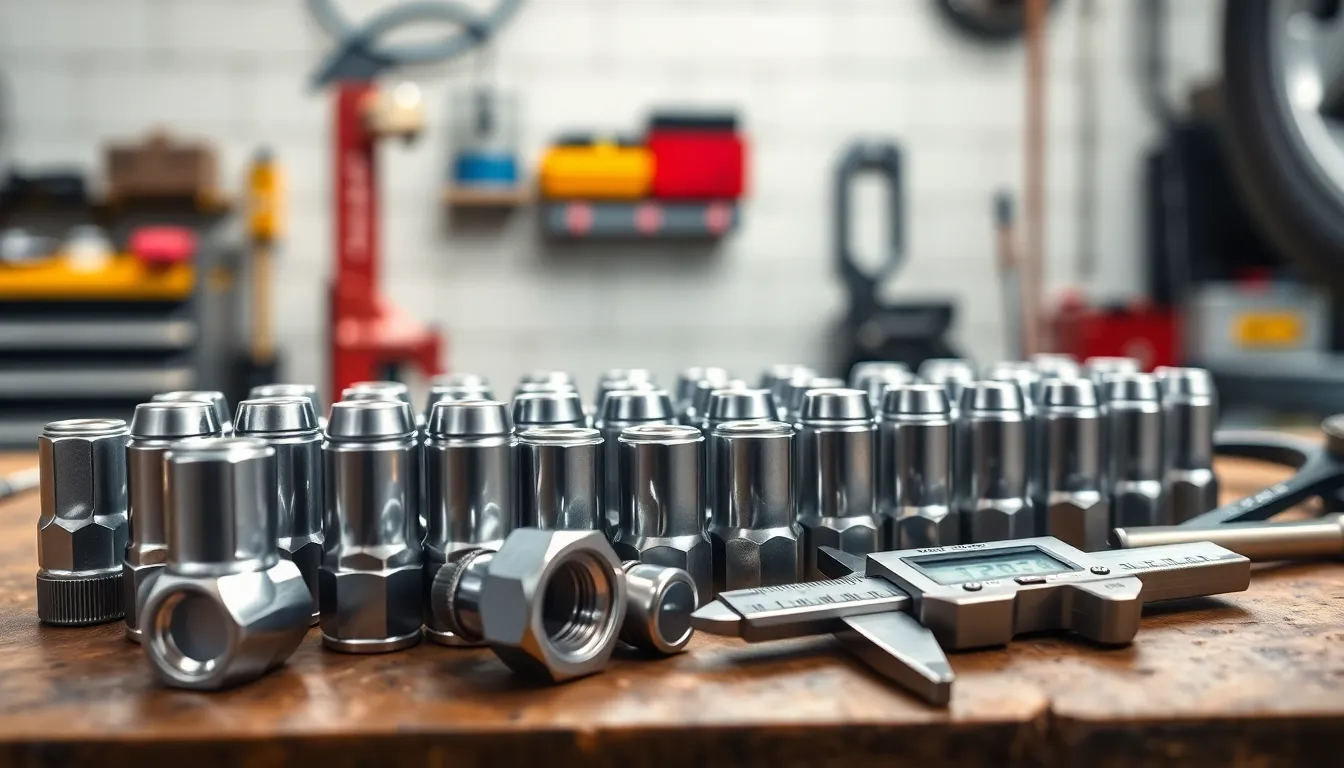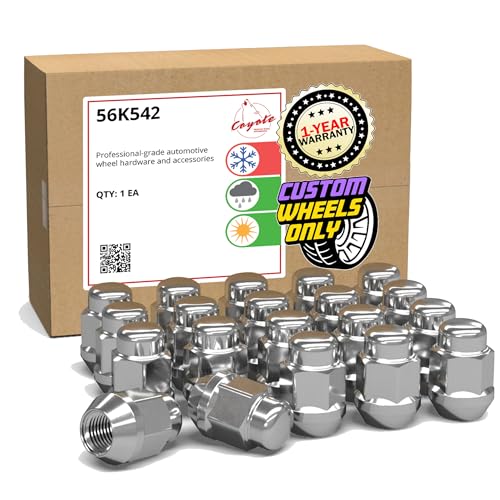When we’re working on our vehicles or shopping for new wheels, one critical detail often gets overlooked until it’s too late – lug nut compatibility. We’ve all been there: excited about our new rims only to discover the lug nuts don’t fit properly, leaving us stranded with an incomplete installation.
Getting the wrong lug nut size isn’t just inconvenient – it’s dangerous. Improperly fitted lug nuts can lead to wheel failure, putting our safety and our passengers’ lives at risk. That’s why we’ve created this comprehensive wheel lug nut size chart to help you navigate the complex industry of automotive fasteners.
Whether you’re a seasoned mechanic or a weekend DIY enthusiast, understanding lug nut specifications will save you time, money, and potential headaches. We’ll break down everything you need to know about thread pitch, seat types, and sizing standards across different vehicle makes and models.
What Is a Wheel Lug Nut Size Chart
A wheel lug nut size chart provides comprehensive specifications for automotive fasteners across different vehicle manufacturers and models. We use these charts to identify critical measurements including thread pitch, hex size, seat type, and overall dimensions for proper wheel installation.
Vehicle manufacturers use exact lug nut configurations based on engineering requirements and safety standards. Our chart organizes this information by make, model, and year to eliminate guesswork during maintenance or wheel changes. Different automakers employ varying thread pitches such as 12mm x 1.25, 14mm x 1.5, or 1/2-20 UNF depending on their design specifications.
Thread pitch measurements indicate the distance between thread peaks, with metric systems using millimeters and imperial systems using threads per inch. Seat types fall into three primary categories: conical (tapered at 60 degrees), ball seat (rounded contact surface), and flat washers (requiring separate washer components). Hex sizes range from 17mm to 22mm for most passenger vehicles, with some specialty applications requiring different dimensions.
Our size chart includes vehicle weight ratings that determine appropriate lug nut strength requirements. Light duty vehicles typically use Grade 8 or Class 10.9 fasteners, while heavy duty applications require higher strength classifications. Torque specifications accompany each listing to ensure proper installation without over-tightening or under-tightening the fasteners.
Professional mechanics and DIY enthusiasts reference these charts to avoid purchasing incorrect fasteners that could compromise wheel security. We organize the data by vehicle categories including sedans, SUVs, trucks, and performance vehicles to streamline the selection process for exact applications.
Why Lug Nut Size Matters for Your Vehicle
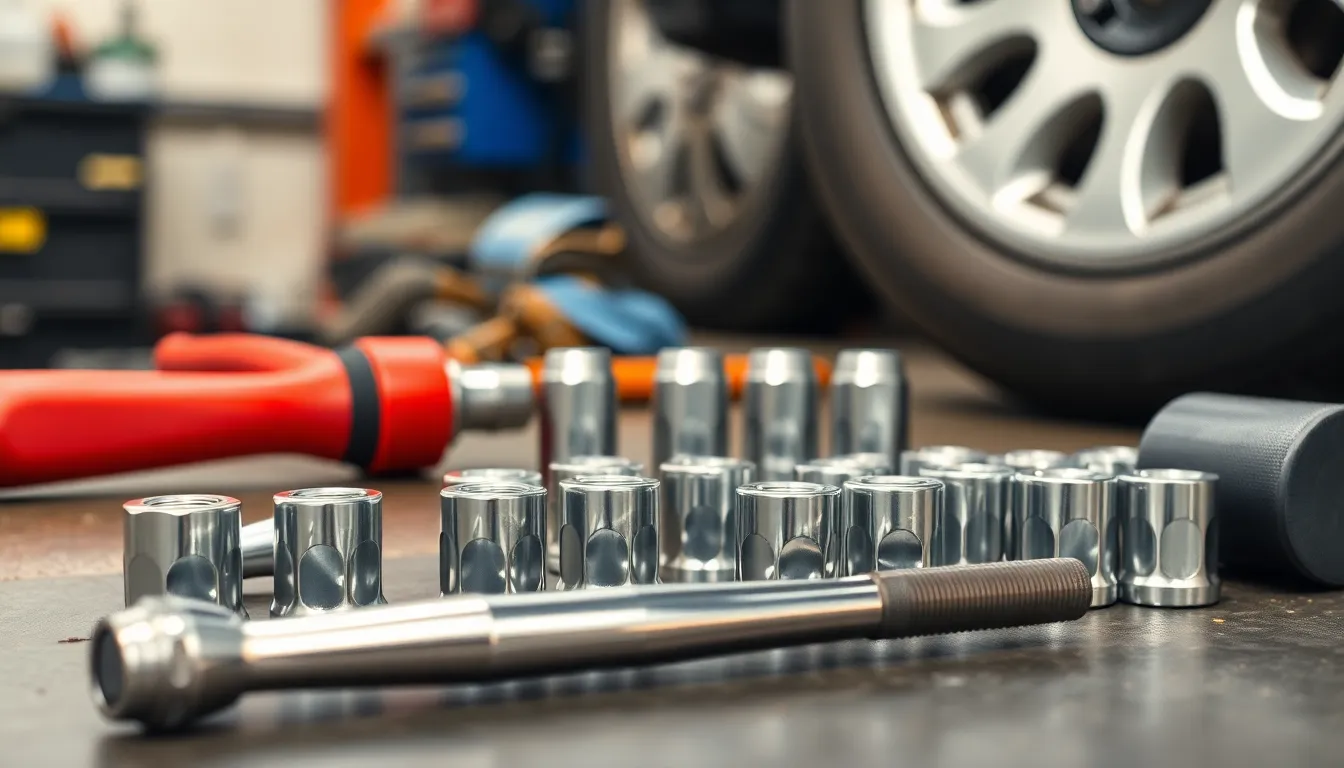
Improper lug nut sizing creates dangerous conditions that can lead to catastrophic wheel failure while driving. We’ve documented cases where incorrect thread engagement results in stripped threads and incomplete seating, compromising the entire wheel assembly’s integrity.
Thread diameter and pitch specifications determine how securely your wheels attach to the vehicle. Metric measurements like 12mm x 1.25 indicate a 12-millimeter diameter stud with 1.25-millimeter thread spacing, while SAE sizes such as 1/2″ x 20 represent half-inch diameter with 20 threads per inch.
Vehicle manufacturers engineer exact lug nut configurations based on weight distribution and safety requirements. Using a 14mm x 1.5 lug nut on a vehicle designed for 12mm x 1.25 prevents proper thread engagement and reduces the contact area between fastener and wheel hub.
Safety risks multiply when lug nuts don’t match vehicle specifications exactly. We observe that mismatched sizing can cause:
- Partial thread engagement reducing holding strength by 60%
- Cross-threading damage requiring expensive stud replacement
- Vibration leading to gradual loosening during operation
- Complete wheel detachment resulting in loss of vehicle control
| Risk Factor | Consequence | Prevention |
|---|---|---|
| Wrong thread pitch | Stripped threads | Verify owner’s manual specs |
| Incorrect diameter | Poor engagement | Use proper sizing chart |
| Mixed fastener types | Uneven torque | Match all lug nuts exactly |
Professional mechanics emphasize checking thread direction since some vehicles use left-hand threaded lug nuts marked with “L” or “LHT” designations. Right-hand threading remains standard across most applications, but confirmation prevents installation errors that compromise wheel security.
Torque specifications vary based on lug nut size and vehicle weight ratings. Proper tightening ensures even pressure distribution across all mounting points, preventing warped brake rotors and maintaining wheel alignment accuracy throughout the vehicle’s service life.
Common Lug Nut Thread Sizes and Specifications
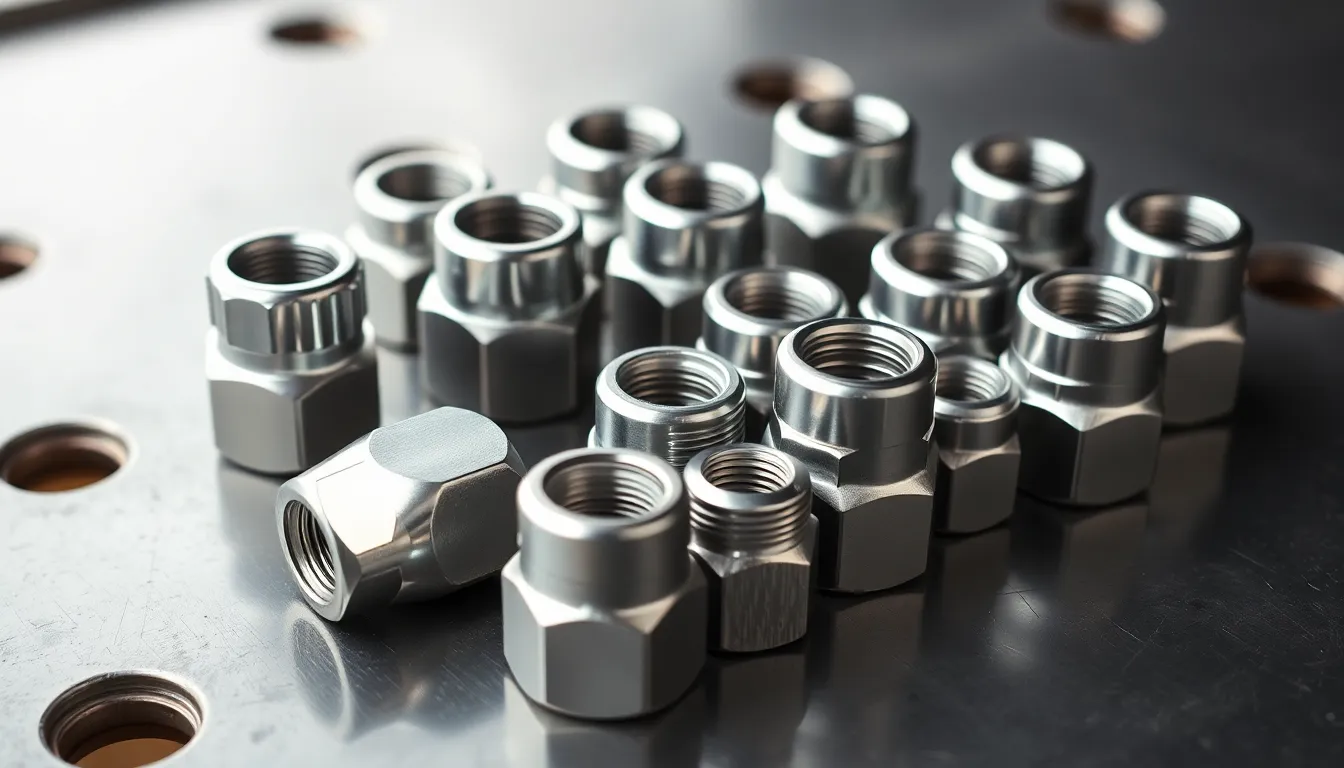
Understanding thread sizes and specifications helps us identify the correct lug nuts for our vehicles. Different manufacturers use exact threading systems based on engineering requirements and regional standards.
Metric Thread Sizes
Metric thread sizes dominate most modern vehicles from international manufacturers. The M12 x 1.25 configuration appears frequently on Subaru, Nissan, and Infiniti models, providing reliable fastening for mid-sized passenger cars. Honda, Toyota, and Mazda vehicles commonly feature M12 x 1.5 threading, offering slightly coarser pitch for enhanced grip strength.
Larger applications require the M14 x 1.5 specification, which manufacturers like Ford, GM, and Chrysler carry out on SUVs, trucks, and heavier passenger vehicles. The 14mm diameter provides increased load capacity compared to 12mm alternatives, making it suitable for vehicles with higher weight ratings.
| Metric Size | Thread Pitch | Common Applications |
|---|---|---|
| M12 x 1.25 | 1.25mm | Subaru, Nissan, Infiniti |
| M12 x 1.5 | 1.5mm | Honda, Toyota, Mazda |
| M14 x 1.5 | 1.5mm | Ford, GM, Chrysler trucks/SUVs |
Standard Thread Sizes
American manufacturers traditionally use SAE (Society of Automotive Engineers) threading standards measured in inches. The 7/16″ – 20 specification serves various American vehicle applications, with the “20” indicating 20 threads per inch rather than millimeter pitch measurement.
Classic American cars and Jeep models frequently use 1/2″ – 20 threading, providing robust fastening capability for heavier domestic vehicles. Select trucks and vintage models incorporate 9/16″ – 18 specifications for applications requiring increased holding strength.
Heavy-duty applications employ 5/8″ – 11 or 5/8″ – 18 configurations, though these sizes appear less commonly and typically on larger commercial trucks. The larger diameter accommodates higher torque requirements and increased load bearing capacity essential for heavy-duty applications.
| SAE Size | Threads per Inch | Typical Applications |
|---|---|---|
| 7/16″ – 20 | 20 | Various American vehicles |
| 1/2″ – 20 | 20 | Jeeps, classic American cars |
| 9/16″ – 18 | 18 | Select trucks, classic models |
| 5/8″ – 11 | 11 | Larger trucks |
| 5/8″ – 18 | 18 | Larger trucks |
How to Determine Your Vehicle’s Lug Nut Size

Identifying the correct lug nut size requires precision measurement and verification through official documentation. We’ll guide you through both measurement techniques and documentation methods to ensure accurate identification.
Measuring Thread Pitch and Diameter
Thread diameter measurement forms the foundation of proper lug nut identification. Measuring the outside diameter of wheel stud threads requires dial or digital calipers since tape measures lack precision for small thread measurements. Common diameters include 7/16″, 1/2″, 9/16″, and 5/8″ for SAE applications, while metric applications typically use 12mm and 14mm specifications.
Thread pitch determination varies between measurement systems. Counting threads in a 1-inch section of the stud determines SAE thread pitch, focusing only on thread peaks during the counting process. Examples include 20 threads per inch or 18 threads per inch configurations. Metric thread pitch calculation involves counting threads in a 10mm section then dividing by 10 to establish threads per millimeter. A measurement of 15 threads in 10mm equals 1.5mm thread pitch through this division method.
Accuracy during measurement prevents installation complications. Digital calipers provide superior precision compared to manual measuring tools when determining thread specifications. Cross-referencing measured values with common sizes like 12mm x 1.25, 12mm x 1.50, 14mm x 1.50, and 14mm x 2.0 for metric applications confirms proper identification.
Using Your Vehicle’s Manual
Owner’s manuals contain definitive lug nut specifications for each vehicle model. Factory documentation lists correct thread diameter, pitch measurements, and torque specifications without requiring physical measurement. Vehicle manufacturers include these specifications alongside other maintenance information to ensure proper service procedures.
Dealership consultation provides additional verification when manuals aren’t available. Trusted parts retailers maintain databases of vehicle-exact lug nut requirements organized by make, model, and year. Professional consultation eliminates guesswork during replacement part selection and confirms compatibility with existing wheel assemblies.
Factory stud sizes typically align with common industry specifications. Most vehicles use standard sizes from the metric and SAE categories outlined in sizing charts, making identification straightforward once specifications are confirmed. Documentation verification ensures matching thread pitch and diameter exactly, which remains critical for safe wheel installation and long-term reliability.
Popular Vehicle Brands and Their Lug Nut Sizes
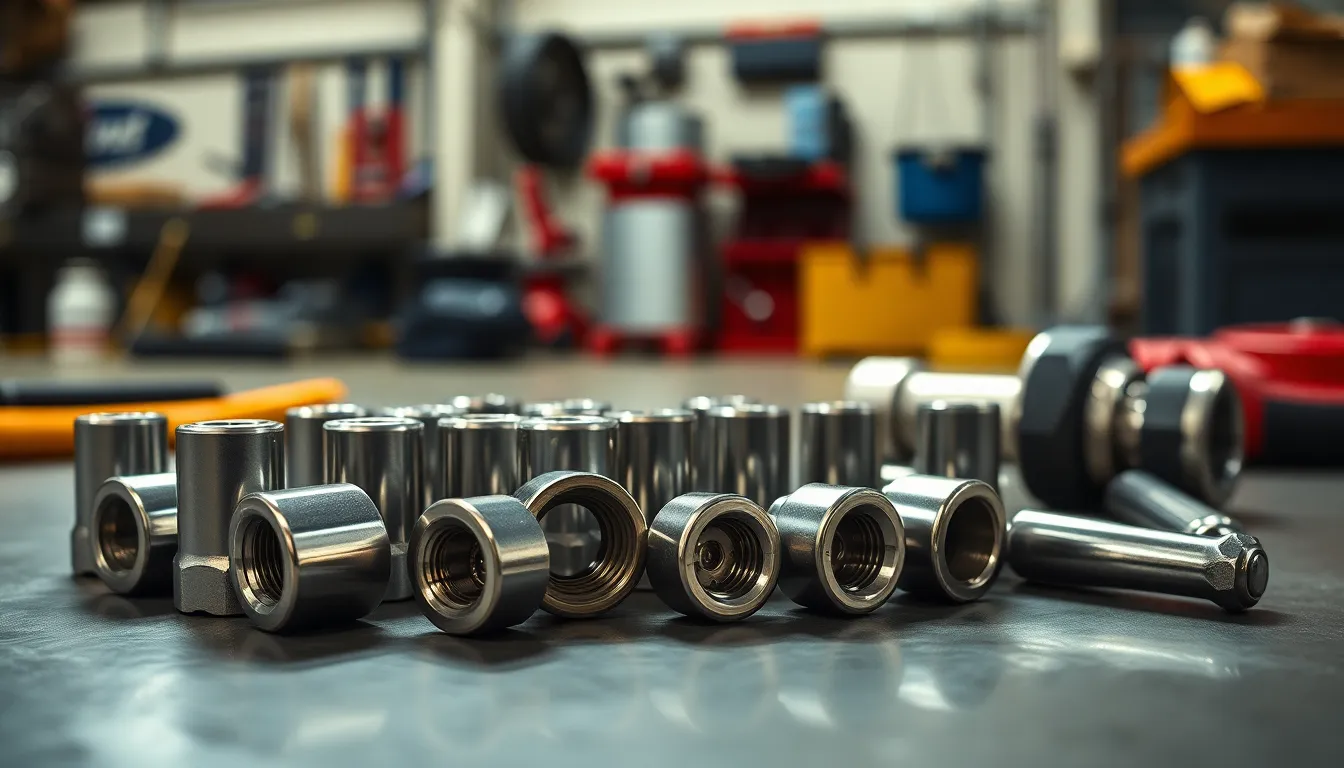
Popular vehicle manufacturers use distinct lug nut specifications based on engineering requirements and safety standards. Understanding these brand-exact measurements prevents compatibility issues and ensures proper wheel installation across different automotive platforms.
| Brand | Common Lug Nut Size (Diameter x Pitch) |
|---|---|
| Ford | 14mm x 1.5 (trucks, SUVs, cars) |
| Chevrolet/GM | 14mm x 1.5 (most vehicles) |
| Honda | 12mm x 1.5 (most models) |
| Toyota | 12mm x 1.5 (most models) |
| Subaru | 12mm x 1.25 |
| Nissan/Infiniti | 12mm x 1.25 |
| Mazda | 12mm x 1.5 |
Ford Lug Nut Specifications
Ford vehicles consistently use 14mm x 1.5 lug nut specifications across cars, SUVs, and trucks. This standardization simplifies maintenance procedures and parts inventory for both dealerships and independent mechanics working on Ford models.
Torque specifications for Ford lug nuts range from 100 to 150 ft-lbs depending on the exact model and year. Consulting the vehicle manual provides exact torque values for optimal wheel assembly performance and safety compliance.
Chevrolet and GM Lug Nut Sizes
Chevrolet and GM models predominantly feature 14mm x 1.5 lug nut configurations across their vehicle lineup. This consistency extends through passenger cars, light trucks, and most SUV platforms manufactured by General Motors.
Proper torque specifications typically fall between 100 to 140 ft-lbs for Chevrolet and GM vehicles. Verifying exact requirements through model-exact documentation ensures correct installation pressure and prevents overtightening damage.
Honda and Toyota Lug Nut Requirements
Honda utilizes 12mm x 1.5 lug nuts across most model configurations, maintaining consistency throughout their passenger car and light SUV offerings. This smaller diameter specification reflects the engineering approach common among Japanese manufacturers.
Toyota mirrors Honda’s approach with 12mm x 1.5 lug nut specifications for the majority of their vehicle models. Both manufacturers typically require torque specifications between 80 to 100 ft-lbs, which accounts for the smaller thread diameter compared to domestic manufacturers.
Confirming specifications through owner documentation remains essential since variations can occur based on exact model years or trim configurations across all manufacturers.
Different Types of Lug Nuts and Their Applications

Lug nuts come in various designs to accommodate different wheel configurations and seating requirements. Understanding these types ensures proper installation and maintains optimal wheel security across diverse automotive applications.
Acorn Lug Nuts
Acorn lug nuts feature a tapered cone-shaped seating surface that fits directly into the wheel’s lug holes. This conical design provides centering and firm clamping force against the wheel assembly. Most passenger cars and aftermarket wheels use this configuration as the standard mounting system.
The tapered surface distributes load evenly across the wheel’s contact area when properly torqued. This design automatically centers the wheel during installation while creating a secure mechanical connection. Modern vehicles predominantly use acorn lug nuts because they accommodate slight variations in wheel positioning and provide consistent performance across different driving conditions.
Flat Seat Lug Nuts
Flat seat lug nuts have a completely flat seating surface that rests flush against the wheel mounting surface. Wheels with flat lug holes specifically require this type for proper contact and load distribution. Older vehicles and certain OEM wheel designs commonly use flat seat configurations.
These lug nuts demand special attention during installation to ensure even torque application across all mounting points. The flat contact surface creates a different stress pattern compared to conical seats and requires precise alignment during wheel mounting. Mechanics must verify the wheel’s seat type before selecting replacement lug nuts to prevent improper fitment and potential safety issues.
Signs You Need to Replace Your Lug Nuts

Regular inspection of lug nuts prevents catastrophic wheel failure and maintains vehicle safety. Professional mechanics identify exact warning signs that indicate immediate replacement requirements.
Stripped or Damaged Threads represent the most critical replacement indicator. Thread wear occurs when lug nuts experience repeated removal and installation cycles or when incorrect torque specifications are applied. Damaged threads prevent proper engagement with wheel studs, creating dangerous loosening conditions during vehicle operation.
Rounded or Damaged Hex Surfaces make lug nut removal and installation impossible with standard tools. Socket wear creates rounded corners that slip during wrench application, preventing proper torque application. Mechanics often encounter this issue with aftermarket wheels or when improper socket sizes are used repeatedly.
Rust or Corrosion Damage weakens lug nut structural integrity and creates seized conditions on wheel studs. Northern climates with road salt exposure accelerate corrosion processes, particularly on steel lug nuts. Chrome and aluminum lug nuts resist corrosion better but still require replacement when surface deterioration becomes visible.
Cracks or Physical Deformation compromise lug nut safety margins and indicate metal fatigue. Stress cracks typically appear near thread areas or around the hex portion after extended service periods. Bent or deformed lug nuts result from impact damage or over-torquing during installation.
Persistent Wheel Vibration or Looseness suggests lug nut failure even when visual inspection appears normal. Lug nuts that repeatedly require retightening indicate worn threads or improper seat contact. This condition creates dangerous driving situations where complete wheel detachment becomes possible.
Frequent Torque Adjustment Requirements signal lug nut degradation beyond normal service limits. Quality lug nuts maintain proper torque specifications between service intervals when installed correctly. Continuous loosening patterns indicate replacement necessity regardless of visual appearance.
| Warning Sign | Risk Level | Action Required |
|---|---|---|
| Stripped threads | Critical | Immediate replacement |
| Rounded hex | High | Replace before next drive |
| Visible rust/corrosion | Moderate | Schedule replacement |
| Cracks or deformation | Critical | Immediate replacement |
| Wheel vibration | High | Inspect and replace |
| Frequent loosening | High | Replace complete set |
Replacement intervals vary based on driving conditions, but most mechanics recommend lug nut inspection every tire rotation service. Commercial vehicles and performance applications require more frequent monitoring due to higher stress loads and extended service cycles.
Where to Buy the Right Lug Nuts for Your Vehicle

Finding the correct lug nuts for your vehicle requires consulting your owner’s manual first, which contains the definitive thread size and pitch specifications you need. Your vehicle manufacturer lists both the thread diameter and threads per inch measurements in this documentation, eliminating guesswork from the purchasing process.
Auto parts retailers serve as primary sources for replacement lug nuts, offering extensive inventory and knowledgeable staff to assist with size verification. Tire shops provide another reliable option, particularly when you’re already servicing your wheels or purchasing new tires for your vehicle.
Online retailers expand your purchasing options significantly, with specialized automotive suppliers offering comprehensive selections. Discount Tire maintains detailed compatibility charts and customer support to ensure accurate fitment for your exact make and model. Speedway Motors stocks performance grade lug nuts for modified vehicles and racing applications. McGard specializes in security lug nuts and wheel locks, providing theft protection alongside standard replacement options.
Physical verification eliminates sizing errors when purchasing replacement hardware for your wheels. Bringing your current lug nut or wheel stud to a local auto parts store allows staff to measure thread diameter and pitch directly. Staff members use thread gauges and measuring tools to confirm specifications before you complete your purchase.
Reference charts at these retail locations help identify correct sizes when you don’t have sample hardware available. These charts organize lug nut specifications by vehicle make, model, and year, streamlining the selection process for your exact application.
Weight ratings and performance specifications matter when selecting lug nuts for your vehicle type. Commercial vehicles require higher strength ratings than passenger cars, while performance vehicles may need specialized materials or designs. Retailers stock different grades of lug nuts to match these varying requirements across vehicle categories.
Always verify that replacement lug nuts match your original seat type, whether conical or ball seat design. Thread compatibility remains critical throughout the selection process, as incorrect hardware can damage your wheels or create unsafe driving conditions.
Conclusion
We’ve equipped you with the essential knowledge to navigate wheel lug nut specifications confidently. Understanding thread pitch seat types and proper sizing isn’t just about maintenance—it’s about your safety on the road.
Remember to always verify specifications through your owner’s manual and double-check measurements before installation. Whether you’re a professional mechanic or weekend DIY enthusiast the right lug nuts make all the difference in wheel security.
Don’t compromise on quality when purchasing replacement lug nuts. Invest in proper specifications that match your vehicle’s requirements and you’ll ensure reliable performance for years to come.
Frequently Asked Questions
What is a wheel lug nut size chart and why do I need one?
A wheel lug nut size chart provides detailed specifications for automotive fasteners across different vehicle makes and models, including thread pitch, hex size, seat type, and overall dimensions. This chart eliminates guesswork during maintenance or wheel changes, helping both professionals and DIY enthusiasts select the correct fasteners to ensure proper wheel installation and prevent safety hazards from using incompatible parts.
What are the most common lug nut sizes for different vehicle brands?
Ford and Chevrolet/GM commonly use 14mm x 1.5 lug nuts, while Honda and Toyota typically use 12mm x 1.5 specifications. These sizes are based on engineering requirements and safety standards specific to each manufacturer. However, specifications can vary by model year and vehicle type, so always consult your owner’s manual or a comprehensive size chart for exact measurements.
How do I measure my vehicle’s lug nut size accurately?
Use digital calipers to measure thread diameter and pitch for maximum accuracy. Count the threads per inch (SAE) or measure the distance between threads in millimeters (metric) to determine pitch. Measure the hex size across flat surfaces, not points. Always cross-reference your measurements with common sizes and verify against your vehicle’s owner manual for definitive specifications.
What’s the difference between acorn and flat seat lug nuts?
Acorn lug nuts feature a tapered cone-shaped seating surface and are standard for most passenger cars and aftermarket wheels, providing secure mechanical connection. Flat seat lug nuts have a completely flat seating surface and are used in older vehicles and specific OEM designs. Using the wrong seat type can compromise wheel security and safety.
What are the warning signs that my lug nuts need replacement?
Key indicators include stripped or damaged threads, rounded hex surfaces, visible rust or corrosion, cracks or physical deformation, persistent wheel vibration, and frequent torque adjustment requirements. Regular inspection is crucial, especially for commercial vehicles and performance applications. Replace lug nuts immediately if any of these warning signs are present to prevent catastrophic wheel failure.
Where should I buy replacement lug nuts for my vehicle?
Purchase lug nuts from reputable auto parts retailers, tire shops, or online suppliers after consulting your owner’s manual for exact specifications. Always verify thread pitch, diameter, seat type, and weight ratings match your vehicle’s requirements. Physical verification of sizes is recommended to avoid errors that could compromise wheel security and safety.
What happens if I use the wrong size lug nuts?
Using incorrect lug nuts can lead to catastrophic wheel failure while driving, stripped threads, incomplete seating, reduced holding strength, and even complete wheel detachment. Mismatched specifications compromise the wheel assembly’s integrity and create severe safety risks. Always ensure proper thread engagement and compatibility to maintain vehicle safety and performance.
How important are torque specifications for lug nuts?
Torque specifications are critical for ensuring even pressure distribution and maintaining proper wheel alignment throughout your vehicle’s service life. Different lug nut sizes and vehicle weight ratings require specific torque values. Under-torquing can cause wheel loosening, while over-torquing can damage threads or wheels. Always follow manufacturer-specified torque values for your specific vehicle and lug nut combination.

